9 Best Bodyweight Exercises for Muscle Gain

Want to ditch the gym fees and sculpt a muscular physique from the comfort of your own home? Look no further than bodyweight exercises! These powerful moves utilize your own bodyweight as resistance, making them effective, accessible, and adaptable to any fitness level. This guide dives into the top 9 bodyweight exercises recommended by fitness experts, targeting all major muscle groups for a balanced and impressive build. From the king of upper body, the pull-up, to core-strengthening crunches and postpartum-friendly pelvic tilts.
Pull-Ups
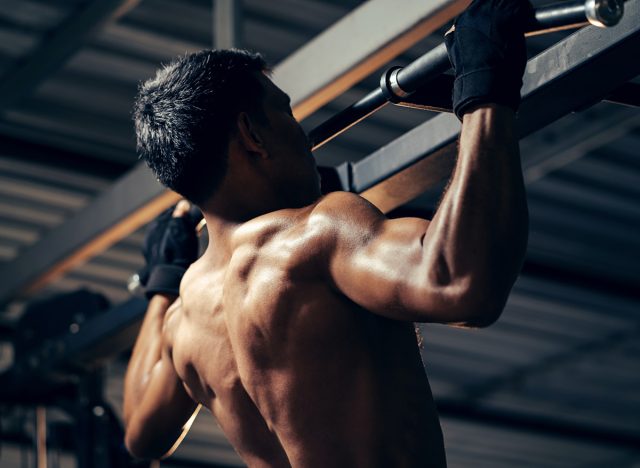
Luke Jones, a certified personal trainer and movement coach with over a decade of experience at HERO Movement, shares, "Pullups are often referred to as the king of bodyweight exercises. They build muscle mass through the back and biceps, strengthen the abdomen, and support a more upright posture." He advises beginners to start by practicing hanging from the bar, then "when you're able to hang for 30-60 seconds at a time, from there you can progress to eccentric pullups (slowly lowering down from the top position), band or partner-assisted pullups, and finally, full pullups or chin-ups."
Tina Salicco Jackson, a certified Functional Diagnostic Nutrition Practitioner and fitness competitor, also advocates for pull-ups, noting their ability to work multiple muscle groups and their adaptability for home workouts.
"Known as one of the most effective back exercises, pull-ups strengthen the biceps, forearms, rhomboids, Latissimus Dorsi, middle and lower trapezius muscles," says Christopher Clarke, certified personal trainer. "Pull-ups not only improve posture, but they also give you that chiseled V-shape that accentuates your physical appearance.
Steps:
- Stand underneath a pull-up or a secure overhead horizontal bar.
- Grab the bar with an overhand grip shoulder-width apart.
- Keep your body straight and pull your body upward placing your chin above the bar.
- Lower your body back to the starting position and repeat."
Related: I'm a Dietitian and These Are Snacks I Eat Daily
Push-Ups
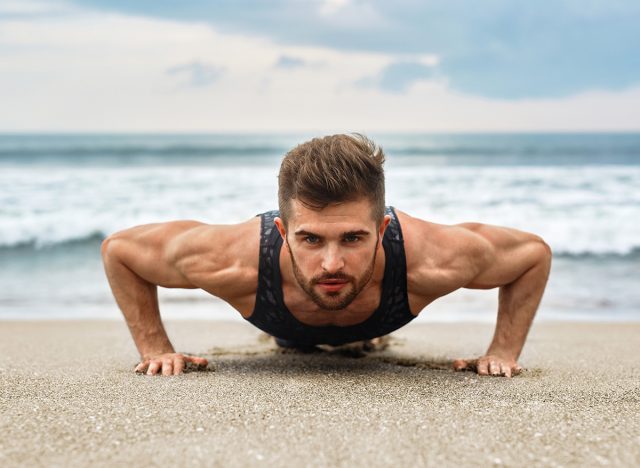
"Various pushup variations or dips can be effective for building musculature around the chest, shoulders, and triceps," states Jones. He suggests using gymnastic rings to increase the challenge and aid in building shoulder mobility and stability.
Push-ups are "the crème de la crème of upper body work—push-ups strengthen your shoulders, triceps and pectoral muscles. Push-ups also lower the risk of cardiovascular disease and improves posture by strengthening core muscles," says Clarke.
"Steps:
- Get down on your hands and knees.
- Place your hands slightly outside your shoulder width.
- Lock and straighten your legs together.
- Lower your body until your elbows are at a 90-degree angle.
- Pause and return to starting position. Repeat."
Lower Body Exercises
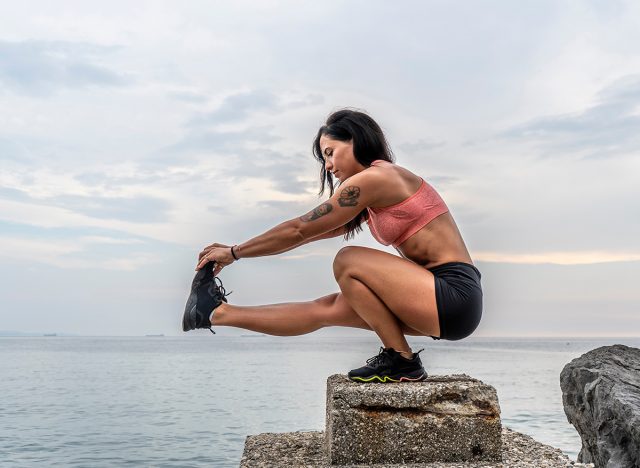
Jones notes the effectiveness of bodyweight exercises for the lower body, "Simply performing bodyweight squats for high reps can be effective, as can single-leg squats and lunges." He also mentions the importance of plyometric drills such as jumps and bounds for building power.
Single Leg Walkout with Push-Up
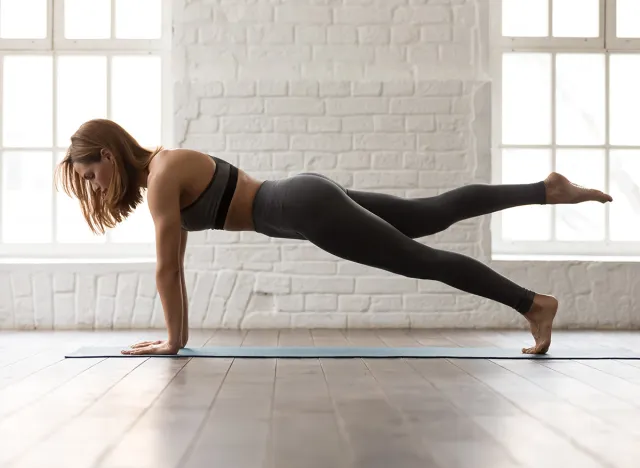
Eric Rakofsky, a certified personal trainer at The Kollective gym in Austin, Texas, recommends, "The Absolute Best bodyweight exercise you can do is a single-leg walkout with a push-up. It's like a more sophisticated burpee but with less wear & tear on your body and more beneficial. Perform 10 reps per leg with 1 minute rest for 3 sets."
Related: Woman Lost 44 Pounds with These Simple Habits You Can Do Today
Squats
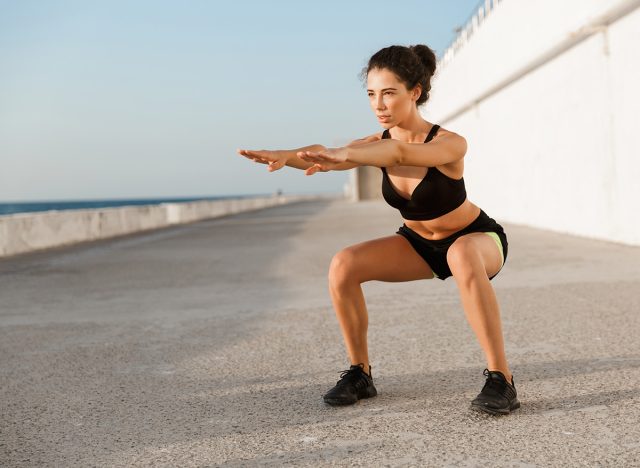
Christopher Clarke, a certified personal trainer, regards squats as the cornerstone of lower body exercises. "Squats strengthen glutes, quadriceps, hamstrings, and abdominal muscles, helping improve balance and preventing back pain," he explains.
"Simply performing bodyweight squats for high reps can be an effective way to build muscle, as can single-leg squats and lunges," says Jones. Says Clarke: "The cherry of lower body exercises, squats strengthen glutes, quadriceps, hamstrings, and abdominal muscles. Squats help improve balance, strengthen core muscles and prevent back pain.
Steps:
- Stand with feet shoulder-width apart.
- Push your hips back.
As if you are sitting down on a chair.
- Bend your knees, while keeping your back straight, knees behind your toes and face forward.
- Squat until your hips are level with your knees and return to starting position. Repeat."
Lunges
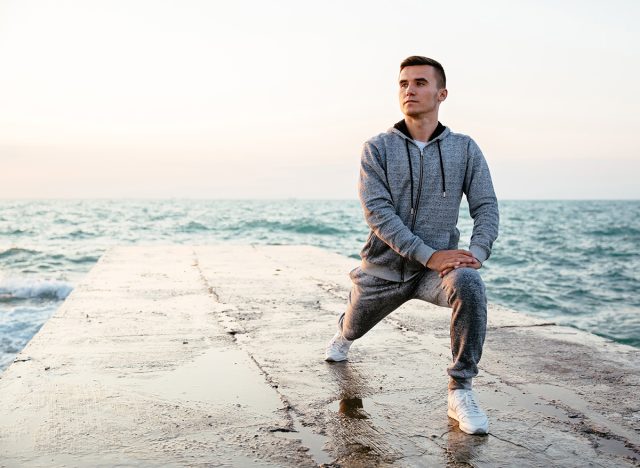
Clarke continues, "Lunges target the gluteal, hamstring, hip, and calf muscles, building lean muscles and strengthening large lower-body muscle groups.
Steps:
- Start in a standing position, legs shoulder-width apart.
- Extend your arms to the side with palms facing your body.
- Take one step forward 2-3 feet and descend until back and front legs are at a 90 degree angle, hold position and then return to the starting lunge position. Repeat."
Crunches
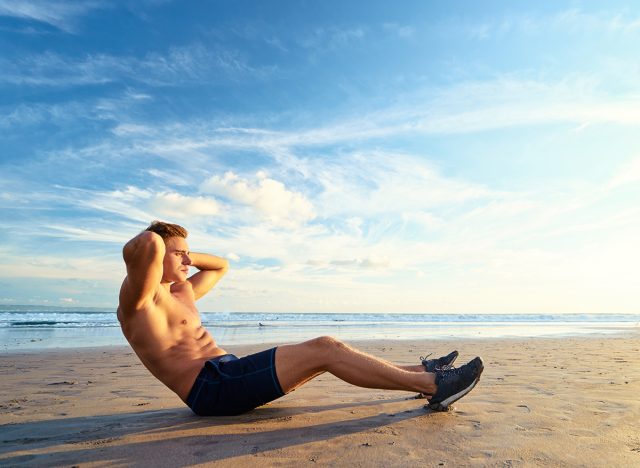
"Considered one of the best exercises to develop and strengthen your abdominal muscles, crunches target the oblique, rectus and transverse abdominis muscles. They improve posture, lower back pain and boost mobility. Crunches can help develop well-defined abdominal muscles and build a six-pack," says Clarke:
"Steps:
- Lie down on your back.
- Place your legs together, bend your knees and plant your feet on the floor.
- Place your hands crossed on your chest.
- Curl up and forward lifting shoulders and head off the floor.
- Hold the top position and return to the floor. Repeat."
Pelvic Tilts
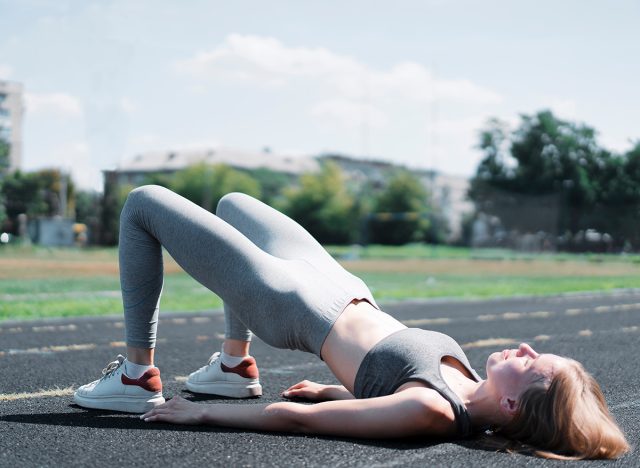
Leslie Ann of LeslieAnn Fit, a personal fitness trainer specializing in postpartum fitness, emphasizes exercises for new mothers, like pelvic tilts. "This exercise engages your core muscles including your abdomen and pelvic floor," says Leslie Ann. "By engaging and activating your transverse abdominal muscles, you stabilize your core and help improve muscle tone to the tummy area. Thus increasing overall muscle gain to the core and abdominals – important for postpartum recovery and return to fitness. To start this exercise, lie on your back with knees bent and feet flat on the floor. Belly breathe in and on the exhale press your lower back into the floor by shifting your pelvis upward. Then, pull your navel to your spine and hold for a few seconds (this activates the deep core muscles). Belly breathe in and slightly arch your back by moving your pelvis into the floor. Repeat for 10-15 reps in a slow and controlled manner."
Related: 3 Easy Steps That Will Help Anyone Lose Weight and Look Great
Bird Dogs
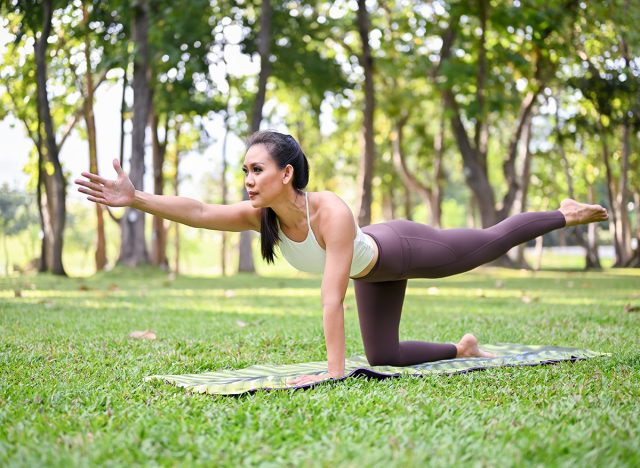
"This exercise contributes to strengthening and toning your core muscles, including the abdominals," says Leslie Ann. "They activate and engage these muscles without adding too much pressure to the pelvic floor or the weakened core muscles. To perform a bird, start on your hands and knees, ensuring your hands are directly below your shoulders and knees below hips. Belly breathe in and on the exhale, pull your navel to your spine. Keeping a neutral spine position, inhale while keeping your navel pulled towards the spine and extend your right arm forward and your left leg backward at the same time. Hold for a few seconds and exhale towards the starting position, ensuring you keep your navel pulled towards your spine. repeat on the opposite side for a total of 10-15 reps per side in a slow and controlled manner. Feel free to incorporate a light dumbbell to add intensity to this exercise and work those core muscles!"
💪🔥Body Booster: Pull-ups not only improve posture, but they also give you that chiseled V-shape that accentuates your physical appearance.




